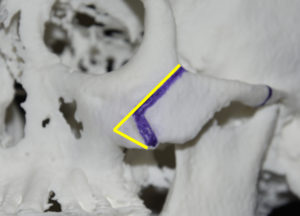Cheekbone reduction has been performed with numerous variations to lessen the risks of its most common complications. This consist of either good bone healing (non-union) and soft tissue cheek sagging. By far soft tissue sag is much more likely to occur of which its origins can be multifactorial. Either the cheekbone itself is pulled down by the action of the masseter muscle attachments or the soft tissue sags due to the subperiosteal degloving done for surgical access.
Plate and screw fixation was proven to be the single greatest factor in lessening the risk of bony non-union and prevention of inferior bony displacement. This can also help prevent soft tissue by a stable bone position. While valuable this alone may may not completely prevent soft tissue sag.

The average age of the patients were young as would be expected with a median age of 25 years old. Mean followup was one (9) months) Good postoperative bone stability and acceptable aesthetic results occurred in all patients. No bony non-union or significant facial asymmetry were seen in any patient.
This technique provides an obvious ledge or brace at the inferior end of the zygomatic body to support/prevent the risk of inferior displacement of the zygomatic body and arch, bracing the bony osteotomy at the body area. This provides additional support to the plate and screw fixation used. This provides another maneuver to resist the strong downward pull of the masseter muscle from the closure and protrusion of the mandible in cheekbone reduction surgery.
Dr. Barry Eppley
Indianapolis, Indiana


